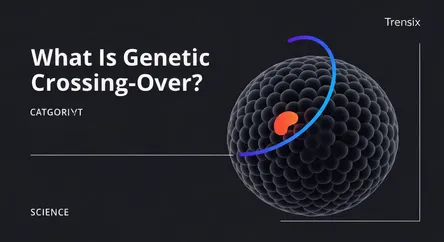Science
What Is Genetic Crossing-Over?

Discover crossing-over, the crucial process in meiosis where chromosomes exchange genetic material, creating genetic diversity and unique life forms.
What is it?
Crossing-over is a fundamental biological process occurring during meiosis, the type of cell division that creates gametes (sperm and egg cells). It involves the exchange of genetic material between homologous chromosomes—one inherited from each parent. During this stage, paired chromosomes physically swap corresponding DNA segments. This shuffling of genes results in new combinations of alleles on the chromosomes, a phenomenon called genetic recombination. It is a key source of genetic variation, ensuring that offspring are genetically distinct from their parents and from each other.
Why is it trending?
As a cornerstone concept in genetics, crossing-over is always relevant in scientific and educational contexts. Its profile is rising due to increased public interest in personal genomics, ancestry testing services, and revolutionary gene-editing technologies like CRISPR. People are more curious than ever about their genetic makeup and the mechanisms of heredity. Understanding crossing-over is crucial for comprehending the principles behind genetic inheritance, variation, and the complex science powering modern biotechnology and personalized medicine.
How does it affect people?
This process is the primary reason for genetic diversity within families and populations. It explains why non-identical siblings possess a unique blend of their parents' traits. By creating novel gene combinations each generation, crossing-over provides the raw material for evolution, allowing species like humans to adapt to changing environments and new diseases. Medically, studying the frequency of crossing-over helps scientists map genes on chromosomes, which is vital for identifying the genetic basis of inherited disorders and developing new diagnostic tools and treatments.